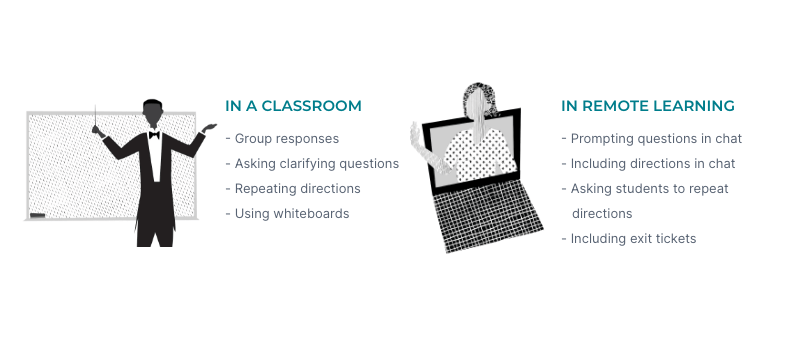Leading change and ensuring students on campus have what they need to be successful learners during the pandemic is a challenging charge. Within our student body, we support and include all students, including students receiving special education services. How do we ensure our support and partnership with teachers and parents leads to student success? Here are three things school leaders can do to support special education!
1. Review and revise your special education-related school-wide systems.
The law has not changed regarding timelines, notices, and meetings. However meetings may be held via telephone or videoconferencing.
It’s important to slow down and, with a core stakeholder group, review processes and procedures. Start by reading your LEA’s Special Education Operating Procedures. Then add campus level details to help with implementation.
Consider systems for:
- Meeting preparation
- Notifications
- Meeting scheduling and technology support
- Implementation of Individualized Education Programs (IEPs)
- Meeting follow up
Do any of these need to be updated to reflect your current virtual situation?
Consider including the following in this stakeholder group: parents/caregivers, students, case managers, special education department chair or lead, campus administrator supervising special education, and general education teachers.
A word on providing accommodations in the new instructional setting.
It may not be obvious to all teachers how each IEP accommodation may successfully translate into the remote learning environment, asynchronously or synchronously. Utilize the expertise of special education teachers on your campus to address this learning curve.
- Look at the IEP and identify the students’ accommodations.
- Think about how these accommodations are provided in face-to-face.
- Consider how these accommodations could be provided in a virtual setting or the students’ new current setting.
Example | Student’s IEP Accommodation: Check for Understanding

In the classroom it can look like group responses, asking clarifying questions, repeating directions, using whiteboards
In a remote setting, that could be prompting questions in the chat, including each set of directions in the chat, asking students to repeat directions in the chat or out loud, include an exit ticket activity or other virtual formative assessment, follow up the class with an email to review the directions, have a special education teacher or paraprofessional (with guidance from special education teacher) check in with the student on the exit ticket.
2. Provide planning time for staff supporting special education students and parents.
Make sure that there is time in the schedule for the general education teacher and the special education teacher to collaborate.
This may be outside of and in addition to the planning time for core content planning. We recommend at least once a week.
This planning time could include:
- General lesson planning
- Determining how to provide accommodations within the lessons
- Determining how to assess students
- Determining how to monitor student progress
- Determining teacher(s) roles and responsibilities. Who does what before, during, and after each lesson? For example, will the general education teacher or special education teacher follow up with parents on anything following the lesson delivery?
For best student learning outcome, these are decisions and plans that should be in place before the learning goes live. They will have a positive impact on all students in that learning environment. These conversations take time in order to be well-planned and intentional.
3. Support positive parent-teacher relationships by encouraging regular communication practices.
We know that it’s important for teachers to build a positive, healthy relationship with their students’ parents. It takes consistent and ongoing communication in order to build that as well as nurture and support it throughout the year. Here are some tips you can provide your teachers to encourage this parent-teacher collaboration:
- Share what is happening in a weekly email
- Provide information up front and a recorded and/or live tutorial on using regular class resources
- Provide additional support in the instruction process that parents can use to support their student’s learning at home. When assigning a project/assignment, record yourself explaining the directions. Provide a visual and worked example.
- For parents who are able and wanting to be physically present during their student’s instruction, ask the parent for feedback on observed student behavior and use of accommodations.
- Document all of these collaborative efforts
We know that none of this can be done quickly or easily, but we also know that it’s best practice to review systems regularly to ensure they’re all supporting student success and campus goals, plan for excellent implementation, and foster positive relationships with our stakeholders. These three high leverage areas will impact well beyond their immediate contact. They work together to support a strong, positive school culture where all stakeholders work together for student learning success.
Join our PLAAFP and Goal Writing course
Learn more about supporting special education students at our PLAAFP and Goal Writing online course.






This is very informative especially with the third number that explains how building a positive and healthy relationship with the students’ parents takes time through consistent and ongoing communication.